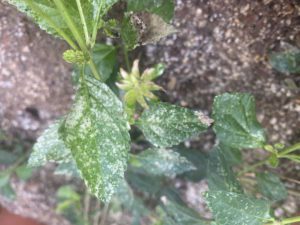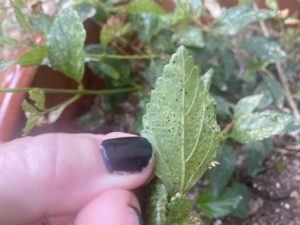The heat has arrived extra early this year and while most of us are none too happy about that, there’s one group that is plenty happy. Pests! This type of weather makes plants prime real estate for pests like lace bugs. When the weather revs up, and plants start to suffer, the activity of these garden pests kicks into high gear. Lace bugs are difficult to see, but their damage is not. (Don’t worry, The Happy Gardener got some good pictures of both Lace bugs and their damage. Today we’ll take a look at how they present themselves and what we can do about controlling them.


What Do Lace Bugs Look For?
There are multiple species of lace bugs that are attracted to multiple types of shrubs or perennials here in Texas. The following list is not extensive by all means, but it’s a good idea to check for Lace bug damage if you have the following plants in your landscape or patio gardens: Lantana (see pics below), Azalea, Fringeflower (Loropetalum), Boxwoods, Boston Ivy, Grapes, Pyracantha, Texas Sage, American Elm, Sycamore. Again, additional plants can be affected and infected, so let’s take a look at what the damage looks like.
Lace bugs also tend to go after plants that are stressed out and under watered, though this isn’t always the criteria. When it is hot (scorching) like it is right now, it’s easy to forgo watering. We’re tired of sweating, right? However, plants need extra attention to their watering needs right now and only you can provide that. Slap on a hat, sunglasses and sunscreen and get on out there. Best to water in the early morning hours. Help your plants feel less stress and avoid garden pests like Lace bugs and are searching out the weak!


Lace Bugs Damage
Lace bugs are small mites and they suck…literally. They pierce the undersides of leaves and suck out the juices. What you first notice is that the tops sides of your leaves are stippled with tiny tan dots. As the infestation increases, the tops of the leaves turn mostly tan, resembling a dried up leaf. Turn the leaf over and you will see black spots (excrement…eww) and most likely the sticky residue of honeydew. The pictures above show the front and back of a lantana leaf before it turns completely tan like the featured image at the top of this blog.
Lace bugs are very difficult to see with their tiny, light brown bodies and clear wings. Many people go years without actually seeing the pests, just the damage. Lucky for you, the Happy Gardener developed her own lace bug infestation just so I could show you what lace bugs look like! Not really, but I was happy that I was able to capture a picture of them so I could at least help you out. See pictures of the culprits below!


Lace Bugs Control
It is always best to apply control products before your infestation of lace bugs gets to the level that mine did. (This is what can happen when you leave town for a week!) When the damage is at this level (see pic of full plant), I generally opt to cut the plant back and discard the affected limbs into the trash and then spray my control product. Although I hate systemic insecticide, this is what works best for my level of lace bugs infestation and provides the longest control.
Other controls include Insecticidal soap, Sevin and horticultural oils (do not use horticultural oils when temps above 90…your out of luck for the time being). Make sure the undersides of leaves are addressed when applying controls, and only spray in the morning or late evening hours during this hot time of year. A late winter application of horticultural oil can help suppress future infestations on susceptible plants because the eggs overwinter on the foliage here in Texas.
Key takeaways from today’s blog:
- Water plants consistently to prevent stress
- Early detection of pests is best
- Look to your leaves for signs of pests
- Spray control under leaves of plants
- Water early morning, spray early morning or late evening
- Lace bugs suck
~The Happy Gardener, Lisa Mulroy


Lisa
file:///var/mobile/Library/SMS/Attachments/01/01/7C181347-65F3-4ABD-B217-BC0013BC16F1/IMG_0270.HEIC.
Hope photo comes thru. Photo of Boston Fern. Your thoughts?
Thanks
Hi Diane,
Unfortunately I am not able to see the photo.
those bugs are on my stroller, bite my baby and me, on the akirt when I come back from a walk, on babies toysz what cn I do to get rid of them? Pest control desinfected my apartment but they didnt kno the insect.. we have a lot of plane trees. I walk by every day.. what can I do to get rid of them?
Hi there,
Unfortunately I am not sure how to control them from being in your apartment. I can only recommend the treatments for the plants like in this article. It would be difficult to treat as you state that you walk by different trees in your area, since those trees don’t appear to be in your landscape. Perhaps you could contact a different pest control company for indoor treatments and specifically ask if they are familiar with this pest and then ask what safe options there are, as you stated you have a baby. I do wish you the best of luck.